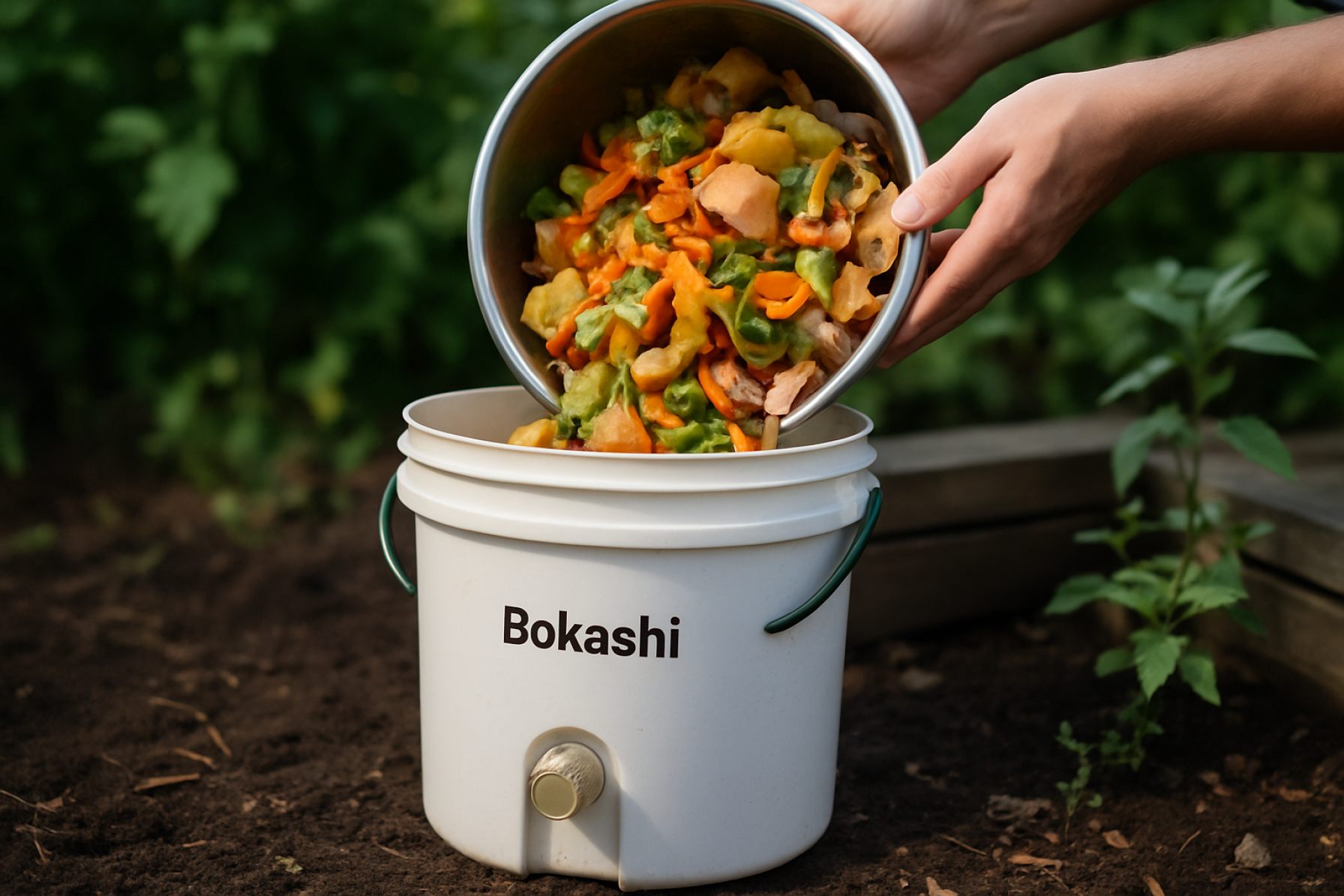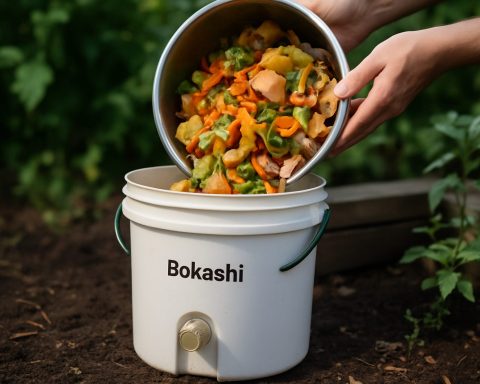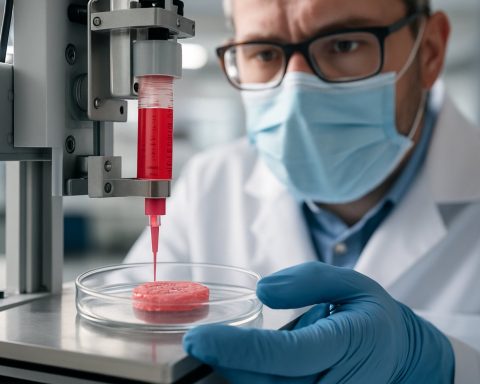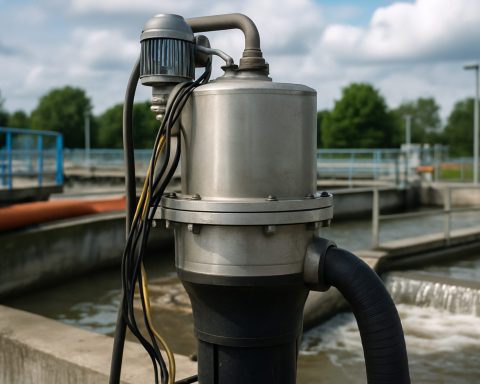Unlocking the Power of Bokashi Composting: How This Fermentation Method Revolutionizes Food Waste Recycling and Soil Health. Discover Why Gardeners and Eco-Innovators Are Turning to Bokashi for Sustainable Solutions. (2025)
- Introduction to Bokashi Composting: Origins and Principles
- How Bokashi Differs from Traditional Composting Methods
- Step-by-Step Guide: Setting Up Your Bokashi System
- The Science Behind Bokashi: Fermentation and Microbial Action
- Materials and Inputs: What Can and Cannot Be Bokashi-Composted
- Benefits for Soil Health and Plant Growth
- Common Challenges and Troubleshooting Tips
- Bokashi in Urban and Small-Space Environments
- Market Trends and Public Interest: Growth Forecasts and Adoption Rates
- The Future of Bokashi Composting: Innovations, Research, and Global Impact
- Sources & References
Introduction to Bokashi Composting: Origins and Principles
Bokashi composting is an innovative method of organic waste management that originated in Japan in the early 1980s. The term “Bokashi” translates to “fermented organic matter” in Japanese, reflecting the process’s reliance on fermentation rather than traditional aerobic decomposition. Unlike conventional composting, which depends on oxygen and microbial activity to break down organic material, Bokashi composting utilizes a specialized mix of microorganisms to ferment food waste in an anaerobic (oxygen-free) environment. This process is typically carried out in airtight containers, allowing for the rapid transformation of kitchen scraps, including items often excluded from standard composting such as meat, dairy, and cooked foods.
The origins of Bokashi composting are closely linked to the work of Dr. Teruo Higa, a professor at the University of the Ryukyus in Okinawa, Japan. In the early 1980s, Dr. Higa developed a proprietary blend of beneficial microorganisms known as Effective Microorganisms (EM). This blend typically includes lactic acid bacteria, yeasts, and phototrophic bacteria, which work synergistically to ferment organic matter, suppress pathogens, and minimize odors. The EM technology has since been commercialized and is distributed globally by organizations such as EM Research Organization, which continues to promote research and education on the applications of EM in agriculture, waste management, and environmental remediation.
The core principle of Bokashi composting is the preservation of nutrients through fermentation. When food waste is mixed with Bokashi bran (a carrier material inoculated with EM) and sealed in a container, the microorganisms rapidly ferment the material, producing organic acids and preventing putrefaction. This process not only reduces greenhouse gas emissions compared to traditional composting but also retains more nutrients in the final product. After the fermentation phase, the pre-composted material can be safely buried in soil, where it breaks down further and enriches the soil ecosystem.
Bokashi composting offers several advantages: it is fast, odorless, and suitable for urban environments where space and time are limited. Its ability to process a wider range of food wastes makes it an attractive option for households, schools, and businesses seeking sustainable waste management solutions. The method is recognized and promoted by various environmental organizations and agricultural extension services worldwide, including the Food and Agriculture Organization of the United Nations, which highlights its role in circular economy and soil health initiatives.
How Bokashi Differs from Traditional Composting Methods
Bokashi composting is a unique method of organic waste management that stands apart from traditional composting techniques in several fundamental ways. While both processes aim to recycle food scraps and organic matter into nutrient-rich soil amendments, their underlying biological mechanisms, operational requirements, and end products differ significantly.
Traditional composting relies on aerobic (oxygen-dependent) microbial activity to break down organic materials. This process requires regular turning or aeration to maintain oxygen levels, and it typically takes several months to produce mature compost. The process generates heat, which helps kill pathogens and weed seeds, but also results in the release of greenhouse gases such as carbon dioxide and, under certain conditions, methane and nitrous oxide. The end product is a dark, crumbly humus that can be directly applied to soil as a conditioner and fertilizer.
In contrast, Bokashi composting utilizes an anaerobic (oxygen-free) fermentation process, facilitated by a specific consortium of microorganisms known as Effective Microorganisms (EM). These include lactic acid bacteria, yeasts, and phototrophic bacteria, which are introduced via a bran-based inoculant. Food waste is layered with the inoculant in an airtight container, excluding oxygen and promoting rapid fermentation. This process typically takes only two to four weeks, after which the material is not fully decomposed but has been pre-digested and acidified.
One of the key differences is that Bokashi can process a wider range of food waste, including meat, dairy, and cooked foods, which are generally discouraged in traditional composting due to odor and pest concerns. The fermentation process in Bokashi suppresses pathogens and odors, making it suitable for indoor or small-space applications. After fermentation, the Bokashi material is usually buried in soil or added to a traditional compost pile, where it rapidly breaks down and enriches the soil.
- Oxygen Requirement: Traditional composting is aerobic; Bokashi is anaerobic.
- Microbial Action: Traditional uses native decomposers; Bokashi uses Effective Microorganisms.
- Accepted Materials: Bokashi accepts a broader range of food waste.
- Processing Time: Bokashi is faster (weeks vs. months).
- End Product: Traditional yields finished compost; Bokashi yields fermented pre-compost requiring further soil integration.
Organizations such as Royal Horticultural Society and United States Environmental Protection Agency provide guidance on both Bokashi and traditional composting, highlighting their respective benefits and best-use scenarios. Bokashi’s distinctive fermentation approach offers a complementary solution to conventional composting, especially for urban dwellers and those seeking to process a wider variety of kitchen waste efficiently.
Step-by-Step Guide: Setting Up Your Bokashi System
Setting up a Bokashi composting system is a straightforward process that enables households and small businesses to efficiently manage food waste, including items typically excluded from traditional composting, such as meat and dairy. Bokashi composting is an anaerobic fermentation process that uses a specialized inoculant—often called Bokashi bran—containing effective microorganisms (EM) to break down organic matter rapidly and with minimal odor. Below is a step-by-step guide to establishing your own Bokashi system:
- Gather Materials: You will need a Bokashi bucket (an airtight container with a spigot at the bottom for draining liquid), Bokashi bran (inoculated with EM), and your kitchen food scraps. Many organizations, such as EM Research Organization, provide information and products related to Bokashi composting.
- Prepare the Bucket: Place the bucket in a convenient location, such as under the kitchen sink. Ensure the spigot is closed before use to prevent leaks.
- Add Food Waste: Chop food scraps into small pieces to accelerate fermentation. Add a layer of food waste to the bucket, spreading it evenly.
- Apply Bokashi Bran: Sprinkle a handful of Bokashi bran over each layer of food waste. The bran introduces beneficial microbes that initiate the fermentation process. Repeat this layering process each time you add new scraps.
- Compress and Seal: Use a plate or a presser to compress the waste, removing as much air as possible. Seal the lid tightly after each addition to maintain anaerobic conditions, which are essential for Bokashi fermentation.
- Drain Bokashi Tea: Every few days, use the spigot to drain the liquid byproduct, known as Bokashi tea. This nutrient-rich liquid can be diluted and used as a fertilizer for plants, as recommended by EM Research Organization.
- Repeat Until Full: Continue adding layers of food waste and Bokashi bran until the bucket is full. Once full, seal the bucket and allow it to ferment for 2–3 weeks.
- Final Processing: After fermentation, the contents can be buried in soil or added to a traditional compost pile, where they will break down rapidly and enrich the soil with nutrients and beneficial microbes, as outlined by Rodale Institute, a leader in organic agriculture research.
By following these steps, you can establish an efficient, odor-free system for recycling food waste and producing valuable soil amendments, contributing to a more sustainable waste management practice.
The Science Behind Bokashi: Fermentation and Microbial Action
Bokashi composting is a unique method of organic waste management that relies on anaerobic fermentation rather than traditional aerobic decomposition. The science behind Bokashi centers on the activity of specific microorganisms, primarily lactic acid bacteria, yeasts, and phototrophic bacteria, which are collectively known as Effective Microorganisms (EM). These microbes are introduced to food waste through a bran or carrier material inoculated with the EM culture, initiating a controlled fermentation process in an airtight environment.
Unlike conventional composting, which requires oxygen and results in the breakdown of organic matter into humus, Bokashi fermentation occurs in the absence of oxygen. The EM microbes rapidly convert sugars and other carbohydrates in the food waste into organic acids, primarily lactic acid. This acidification lowers the pH, creating an environment that suppresses the growth of putrefactive and pathogenic bacteria. As a result, the waste does not rot or emit foul odors, but instead undergoes a pickling process that preserves much of its original structure while making nutrients more bioavailable for soil organisms once the material is buried in soil.
The key to Bokashi’s effectiveness lies in the metabolic pathways of the EM consortium. Lactic acid bacteria, such as Lactobacillus species, dominate the fermentation, producing lactic acid as a byproduct. This acid acts as a natural preservative and antimicrobial agent. Yeasts contribute by breaking down complex carbohydrates and producing alcohols and other metabolites, while phototrophic bacteria help in decomposing organic substances and suppressing odors. The synergy among these microbes accelerates the fermentation process, typically completing it within two weeks under optimal conditions.
After fermentation, the Bokashi-treated material is not yet compost in the traditional sense. It must be incorporated into soil, where aerobic microbes and soil fauna complete the decomposition process. The pre-digested, acidic material is rapidly assimilated, enriching the soil with nutrients and beneficial microbes. Studies have shown that Bokashi composting can enhance soil microbial diversity, improve nutrient cycling, and increase plant growth, making it a valuable tool for sustainable agriculture and waste reduction (Food and Agriculture Organization of the United Nations).
The Bokashi process exemplifies the power of harnessing specific microbial communities to transform organic waste efficiently and with minimal environmental impact. Its scientific foundation in fermentation and microbial ecology distinguishes it from other composting methods and underpins its growing popularity among gardeners, farmers, and urban dwellers seeking sustainable waste solutions.
Materials and Inputs: What Can and Cannot Be Bokashi-Composted
Bokashi composting is a fermentation-based process that enables the rapid breakdown of organic materials, including many items not suitable for traditional aerobic composting. The system relies on the addition of a specialized inoculant—typically a mix of lactic acid bacteria, yeasts, and phototrophic bacteria—applied to organic waste in an airtight container. This process, known as anaerobic fermentation, produces a pre-compost material that can be safely incorporated into soil after a short period of burial.
Materials Suitable for Bokashi Composting
- All food scraps: Unlike traditional composting, bokashi can process cooked and uncooked food, including meat, fish, dairy, eggs, bread, and small bones. This is possible because the fermentation process suppresses pathogens and odors that would otherwise attract pests.
- Fruit and vegetable peels: All types of fruit and vegetable waste, including citrus and onion skins, are suitable.
- Coffee grounds and tea bags: These are readily broken down and add valuable nutrients.
- Wilted flowers and small amounts of garden waste: While bokashi is primarily for kitchen waste, small amounts of soft plant material can be included.
- Paper towels and napkins: Provided they are unbleached and free from chemical contaminants, these can be added in moderation.
Materials to Avoid in Bokashi Composting
- Large bones and hard shells: Items such as large animal bones and shells from nuts or seafood decompose too slowly for the bokashi process.
- Excessive liquids: While some moisture is necessary, too much liquid can disrupt the anaerobic environment and lead to putrefaction.
- Non-biodegradable materials: Plastics, metals, glass, and synthetic fabrics should never be included.
- Pet waste: Feces from cats, dogs, or other carnivorous animals may contain pathogens not neutralized by bokashi fermentation.
- Heavily oiled or greasy foods: While small amounts are acceptable, large quantities can inhibit the fermentation process.
The flexibility of bokashi composting in accepting a wide range of food wastes—including those typically excluded from aerobic composting—makes it particularly attractive for households and businesses seeking to minimize landfill contributions. However, it is essential to maintain the right balance of materials and avoid contaminants to ensure effective fermentation and safe soil amendment. For best practices and further guidance, organizations such as United States Environmental Protection Agency and Royal Horticultural Society provide resources on composting methods and material suitability.
Benefits for Soil Health and Plant Growth
Bokashi composting is an anaerobic fermentation process that transforms food waste into a nutrient-rich soil amendment, offering significant benefits for soil health and plant growth. Unlike traditional aerobic composting, bokashi utilizes specific microorganisms—primarily lactic acid bacteria, yeasts, and phototrophic bacteria—to ferment organic matter in the absence of oxygen. This process is initiated by inoculating food scraps with a bokashi bran, which is typically a carrier material (such as wheat bran) infused with effective microorganisms (EM). The result is a pre-composted material that, when incorporated into soil, rapidly decomposes and enriches the soil ecosystem.
One of the primary benefits of bokashi composting is the preservation and enhancement of organic matter. The fermentation process retains more nutrients, particularly nitrogen, compared to traditional composting, where some nutrients are lost as gases. When bokashi-treated material is added to soil, it acts as a slow-release fertilizer, providing plants with essential macronutrients and micronutrients over time. This nutrient availability supports robust plant growth, improved root development, and increased crop yields.
Bokashi composting also promotes soil microbial diversity and activity. The effective microorganisms introduced during the process continue to proliferate in the soil, enhancing the microbial community structure. These beneficial microbes help suppress soil-borne pathogens, improve nutrient cycling, and foster symbiotic relationships with plant roots. Enhanced microbial activity leads to better soil aggregation, increased water retention, and improved soil structure, all of which are critical for healthy plant growth.
Another advantage is the rapid integration of bokashi compost into the soil. Unlike traditional compost, which requires months to mature, bokashi pre-compost can be buried in soil and fully decomposes within a few weeks. This quick turnaround allows for more frequent soil enrichment and waste recycling, making it particularly suitable for urban gardens and small-scale agriculture.
Furthermore, bokashi composting is effective at processing a wider range of food wastes, including meat and dairy, which are typically excluded from aerobic composting due to odor and pest concerns. This inclusivity reduces landfill waste and recycles more nutrients back into the soil.
Organizations such as the EM Research Organization—the originator of the Effective Microorganisms technology—have documented the positive impacts of bokashi on soil health and plant productivity. Their research and outreach efforts have contributed to the global adoption of bokashi methods in both home and commercial settings.
Common Challenges and Troubleshooting Tips
Bokashi composting is a popular method for recycling food waste, but like any composting system, it can present certain challenges. Understanding these common issues and knowing how to address them is essential for maintaining an effective and odor-free Bokashi process.
1. Foul Odors
One of the most frequent concerns with Bokashi composting is the development of unpleasant smells. Ideally, Bokashi bins should emit a slightly sweet, pickled scent due to the fermentation process. Strong, rotten, or putrid odors often indicate the presence of unwanted bacteria, usually caused by excess moisture, insufficient Bokashi bran, or the inclusion of inappropriate materials (such as liquids or moldy food). To resolve this, ensure that only recommended food scraps are added, sprinkle enough Bokashi bran to cover each layer, and drain the bin regularly to remove excess liquid. The United States Environmental Protection Agency (EPA) recommends keeping composting systems well-managed to avoid odor and pest issues.
2. Mold Growth
White mold is a normal and beneficial sign of fermentation in Bokashi bins, indicating the presence of effective microorganisms. However, green, blue, or black mold suggests contamination by undesirable fungi. This can result from too much air exposure, insufficient Bokashi bran, or adding already moldy food. To prevent this, press down food scraps to minimize air pockets, use fresh Bokashi bran, and avoid adding spoiled food. If colored mold appears, remove the affected material and add extra bran to restore balance.
3. Excess Liquid (Bokashi Tea)
Bokashi bins produce a nutrient-rich liquid known as Bokashi tea. If not drained regularly, this liquid can create anaerobic conditions, leading to foul odors and poor fermentation. Most commercial Bokashi bins are equipped with a spigot for easy draining. The Royal Horticultural Society (RHS), a leading UK gardening charity, advises draining the liquid every few days and diluting it before using it as a fertilizer.
4. Slow Fermentation
If the composting process seems slow, it may be due to low temperatures, insufficient Bokashi bran, or large food pieces. To speed up fermentation, chop food scraps into smaller pieces, store the bin in a warm location, and ensure each layer is well-covered with bran. The Garden Organic organization, a UK authority on organic gardening, highlights the importance of maintaining optimal conditions for efficient composting.
By recognizing and addressing these common challenges, Bokashi composters can maintain a healthy, efficient system and maximize the benefits of this sustainable food waste solution.
Bokashi in Urban and Small-Space Environments
Bokashi composting has emerged as a highly effective solution for organic waste management in urban and small-space environments. Unlike traditional composting methods that require ample outdoor space and aeration, Bokashi utilizes a fermentation process that is both compact and odor-minimizing, making it particularly suitable for apartments, condominiums, and homes with limited or no garden access.
The Bokashi system relies on the use of specialized microorganisms—often referred to as Effective Microorganisms (EM)—to ferment food scraps in an airtight container. This process is anaerobic, meaning it does not require oxygen, and can be conducted entirely indoors. The primary equipment needed is a Bokashi bucket with a tight-fitting lid and a spigot for draining liquid byproducts, along with Bokashi bran inoculated with EM. The process is simple: food waste is layered with Bokashi bran, sealed, and left to ferment for about two weeks. The resulting pre-compost can then be buried in soil or added to a traditional compost pile to complete decomposition.
Urban dwellers benefit from Bokashi composting in several ways. First, the system is highly space-efficient, requiring only a small container that can fit under a kitchen sink or in a closet. Second, the fermentation process produces minimal odor, a crucial consideration in densely populated living spaces. Third, Bokashi can process a wider range of food waste—including meat, dairy, and cooked foods—compared to most other home composting methods, which typically exclude these items due to pest and odor concerns.
The liquid byproduct, often called “Bokashi tea,” can be drained periodically and diluted for use as a nutrient-rich fertilizer for houseplants or urban gardens. This closed-loop approach not only diverts organic waste from landfills but also supports local food production and soil health, aligning with sustainability goals promoted by organizations such as the United States Environmental Protection Agency and the United Nations Environment Programme.
Community initiatives and educational programs in cities worldwide are increasingly incorporating Bokashi systems to address urban waste challenges. For example, some municipalities and non-profits provide Bokashi kits and training to residents, encouraging decentralized composting and reducing the burden on municipal waste systems. As urban populations grow and space becomes more limited, Bokashi composting offers a practical, scalable, and environmentally responsible method for managing food waste in small-space environments.
Market Trends and Public Interest: Growth Forecasts and Adoption Rates
Bokashi composting, an anaerobic fermentation process originating from Japan, has seen a notable rise in global interest as sustainable waste management and circular economy initiatives gain momentum. The method’s ability to process a wide range of organic waste—including meat and dairy, which are typically excluded from traditional composting—has contributed to its growing appeal among households, urban gardeners, and small-scale commercial operations.
In recent years, public awareness of food waste’s environmental impact has driven adoption of home composting solutions. Bokashi’s compact, odor-minimizing system is particularly attractive in urban environments where space and convenience are critical. Organizations such as the United States Environmental Protection Agency and the United Nations Environment Programme have highlighted the importance of reducing organic waste in landfills, further fueling interest in alternative composting methods like Bokashi.
Market trends indicate a steady increase in Bokashi product availability, with manufacturers and retailers expanding their offerings of Bokashi bins, bran, and starter kits. The rise of e-commerce platforms has made these products more accessible to consumers worldwide. In regions such as Europe and North America, where municipal composting infrastructure may be limited or where residents seek to manage waste at the source, Bokashi adoption rates are projected to grow through 2025.
Educational campaigns and community initiatives have also played a significant role in boosting public interest. Nonprofit organizations and local governments are increasingly incorporating Bokashi workshops into sustainability programs, emphasizing its benefits for soil health and waste reduction. The Food and Agriculture Organization of the United Nations has recognized the value of diverse composting methods, including Bokashi, in supporting sustainable agriculture and food systems.
Forecasts for 2025 suggest that Bokashi composting will continue to gain traction, particularly in urban and peri-urban settings. While precise global adoption rates are difficult to quantify due to the decentralized nature of home composting, industry observers anticipate double-digit annual growth in Bokashi-related product sales and educational outreach. As environmental regulations tighten and consumer demand for sustainable living solutions increases, Bokashi composting is poised to become an integral part of the broader organic waste management landscape.
The Future of Bokashi Composting: Innovations, Research, and Global Impact
Bokashi composting, a fermentation-based method for processing organic waste, is gaining global attention as a sustainable alternative to traditional composting. Unlike aerobic composting, Bokashi uses specific microorganisms—primarily lactic acid bacteria, yeasts, and phototrophic bacteria—to ferment food scraps in an anaerobic environment. This process not only accelerates decomposition but also minimizes greenhouse gas emissions and odors, making it suitable for urban and indoor settings. As environmental concerns and waste management challenges intensify worldwide, the future of Bokashi composting is shaped by ongoing innovations, scientific research, and its expanding global footprint.
Recent research focuses on optimizing the microbial consortia used in Bokashi bran to enhance efficiency and nutrient retention. Scientists are investigating the use of locally sourced organic materials and indigenous microorganisms to tailor Bokashi systems for different climates and waste streams. For example, studies in Japan and South Korea—where Bokashi originated and is widely practiced—have demonstrated that customizing the microbial mix can improve the breakdown of complex organic matter and increase the bioavailability of nutrients in the resulting soil amendment. This research is supported by agricultural universities and government agencies dedicated to sustainable farming and waste reduction.
Technological innovations are also driving the evolution of Bokashi composting. Startups and established companies are developing user-friendly Bokashi bins with improved sealing mechanisms, leachate collection systems, and digital monitoring tools. These advancements aim to make Bokashi more accessible for households, schools, and businesses, while ensuring consistent results. Some organizations are piloting community-scale Bokashi hubs, integrating the process into municipal waste management systems to divert food waste from landfills and reduce methane emissions. Such initiatives align with the goals of international bodies like the United Nations Environment Programme, which advocates for circular economy solutions and sustainable urban development.
Globally, Bokashi composting is being adopted in diverse contexts—from urban apartments in Europe and North America to rural farms in Africa and Asia. Non-governmental organizations and agricultural extension services are promoting Bokashi as a low-cost, low-tech solution for improving soil health and food security. The method’s ability to process a wide range of organic materials, including meat and dairy, sets it apart from conventional composting and broadens its applicability. As more cities and communities seek to close the loop on organic waste, Bokashi composting is poised to play a pivotal role in achieving zero-waste goals and regenerating soils worldwide.
Sources & References
- EM Research Organization
- Food and Agriculture Organization of the United Nations
- Royal Horticultural Society
- Rodale Institute









